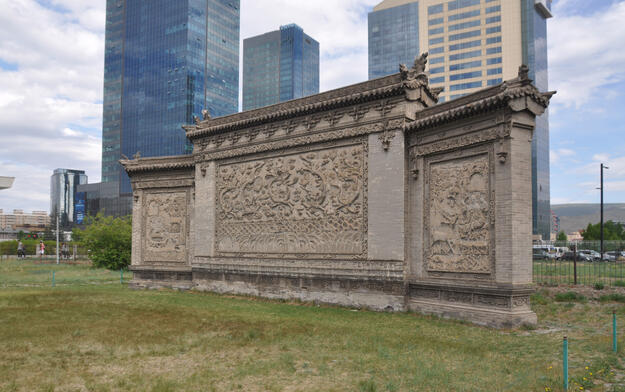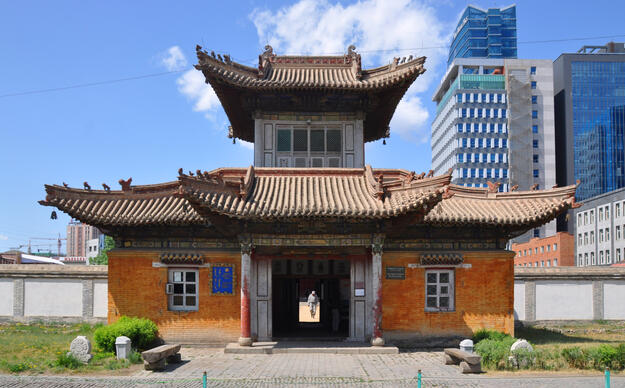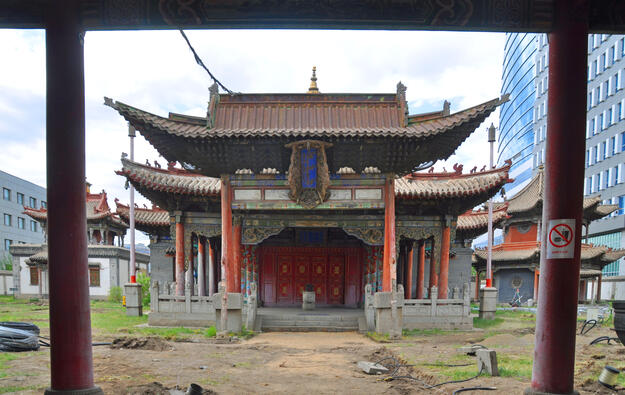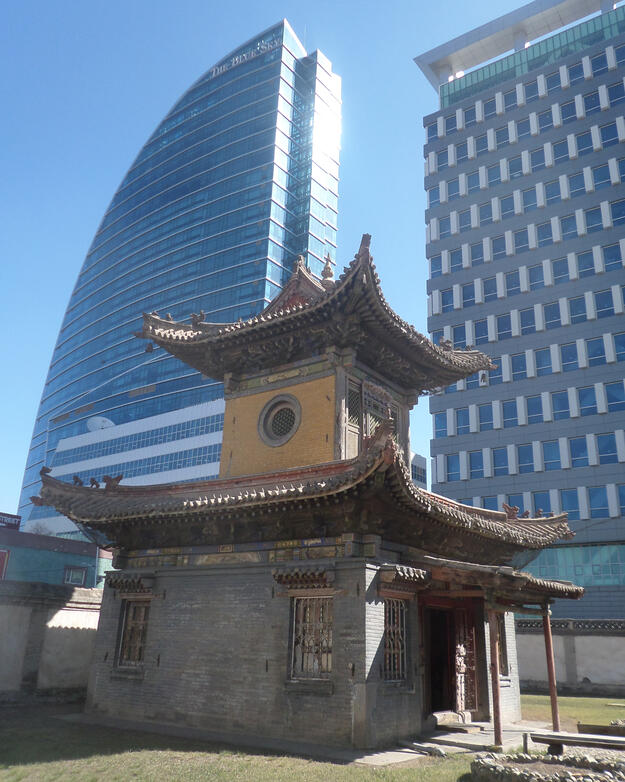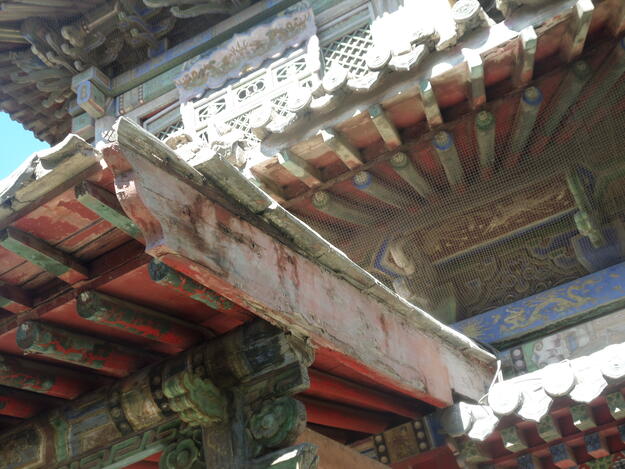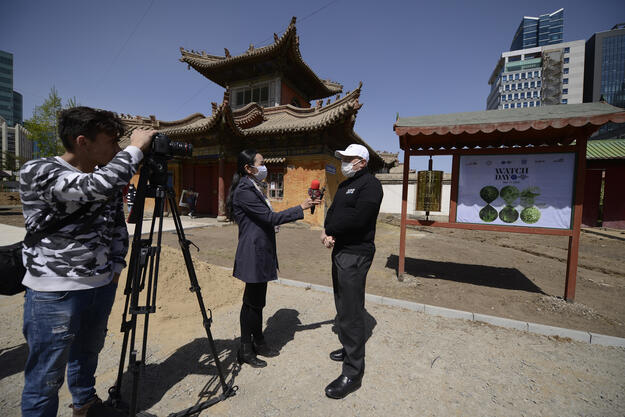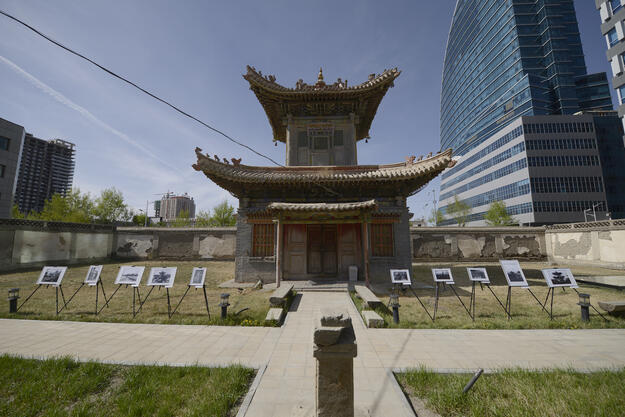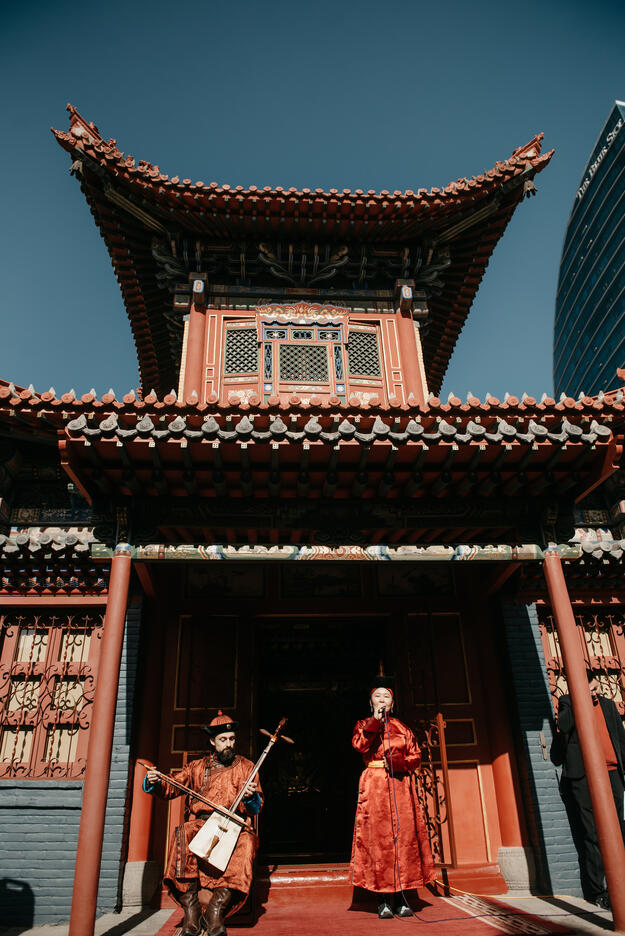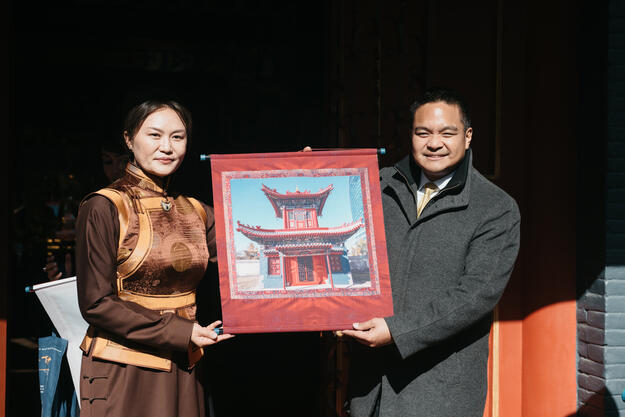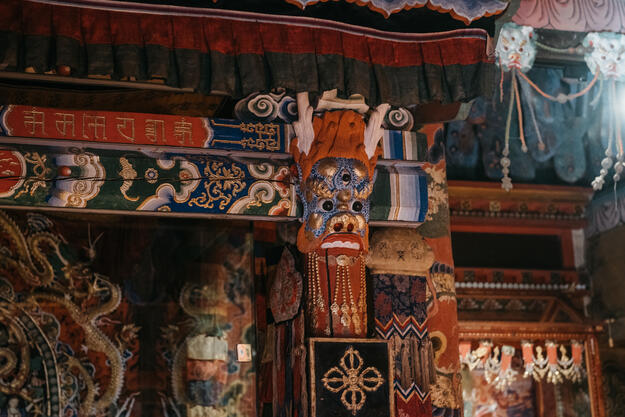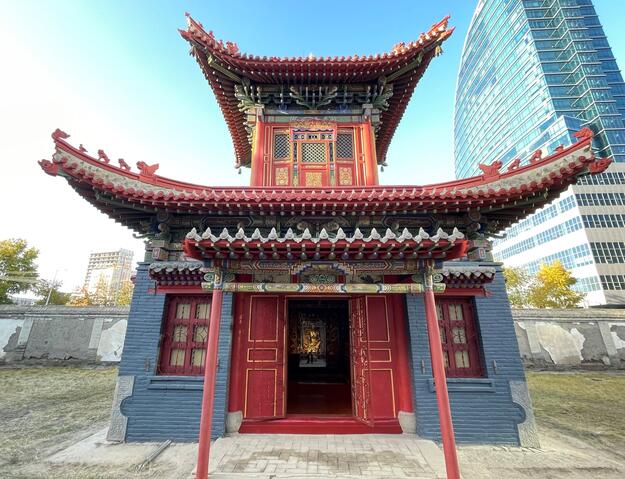Choijin Lama Temple
Site History and Significance
Choijin Lama Temple under the Bond Khaganate
The Choijin Lama Temple complex was built between 1904 and 1908 at the order of the eighth Javzandamba Khutagt, spiritual leader of Mongolian Buddhism (or Bogd Khan) and later head of the Bogd Khaganate in Mongolia following its independence in 1911. The complex was dedicated to his younger brother, the sitting Choijin Lama, or protector of Buddhist teachings in Mongolia. The Choijin Lama served as the official state oracle of Mongolia and occupied the temple until his death in 1918.
One of the Few Surviving Historic Buddhist Buildings in Mongolia
In the 1920s, Communist revolutionaries took over the Mongolian government with the support of the Soviet Union and sought to suppress traditional religion around the country. Violent purges in 1937–38 led to the arrest and execution of thousands of lamas. All the monasteries in Mongolia—over 1,000—were shuttered, and most of them completely destroyed, including their contents of holy books and other religious objects. Only a few surviving buildings were nationalized and preserved for non-religious purposes—among them, the Green Palace or Winter Residence of the Bogd Khan, transformed into a museum, and the Choijin Lama Temple, which also survived intact. The site was converted into a Museum of Religious History in 1942, exhibiting artifacts from destroyed monasteries. While the purge of 1937–8 did not repeat itself, religious worship and ceremonies remained prohibited in Mongolia until 1990.
An Example of Chinese-style Religious Architecture
The temple of the Choijin Lama is an important example of Chinese-style religious architecture. The five temples included in the complex were built using blue bricks, with timber roofs supported on wooden posts and decorated with green tiles. Each temple was dedicated to a specific deity, including the Makhranz (or Maharajas—“great king” guardians of the four directions), the Shakyamuni Buddha, and the tantric deities worshipped by the Choijin Lama. The main temple is where the Choijin Lama would go into a trance and make oracular pronouncements to be interpreted by an attendant lama or monk.
Our Involvement
2020 World Monuments Watch
In recent years, Mongolian Buddhism has experienced a steady revival as part of a national effort to strengthen Mongolian identity. The buildings of the Choijin Lama Temple complex and their collections constitute a unique resource and one of Mongolian Buddhism’s surviving links with the past. The site was included on the 2020 World Monuments Watch to lend support and visibility to the local and international efforts to design a master plan for the conservation of the site in partnership with the Arts Council of Mongolia. A Watch Day was held on May 17, 2020 at the site following lift on a ban of public activities in the country due do the COVID-19 pandemic. Activities included tree planting in the front yard of the temple, a papier-mâché art workshop for students, and a guided online tour of the site.
Restoring the Yadam Temple
Following the creation of a conservation master plan in collaboration with the Arts Council of Mongolia (ACM), WMF organized a scientific advisory team to lend their expertise in support of the restoration of Yadam Temple in the Choijin Lama museum complex and develop local capacity-building activities focusing on traditional crafts and conservation techniques. Funded by the U.S. Ambassadors Fund for Cultural Preservation (AFCP) and the U.S. Embassy Ulaanbaatar, restoration work began at the site in May 2022 and was completed in October 2023, when an inauguration ceremony was held.
Located at the north end of the museum complex, the Yadam Temple houses a collection of copper and brass sculptures; scroll paintings; diverse artworks including papier-mâché sculptures and masks; engravings; textiles; silk appliqué; and instruments used for religious ceremonies. Eight of the objects displayed in the temple were included by the government in the list of exceptionally invaluable historical and cultural monuments of Mongolia.
Learn More
World Monuments Fund safeguards cultural heritage around the globe, ensuring our treasured places are preserved for present and future generations.
Sign up for our newsletter to receive regular updates on our projects, stories from the field, upcoming events, and more!
![]()
World Monuments Fund’s work at the Yadam Temple has been supported, in part, by the U.S. Ambassadors Fund for Cultural Preservation (AFCP) and the U.S. Embassy Ulaanbaatar.

